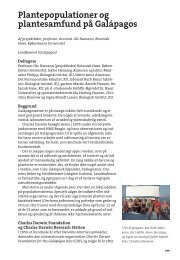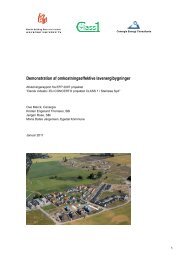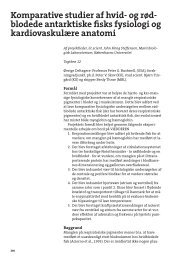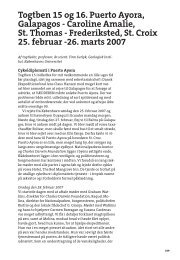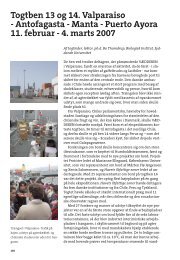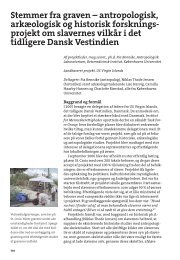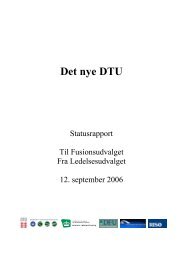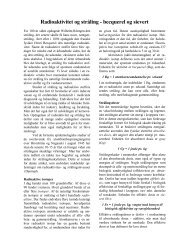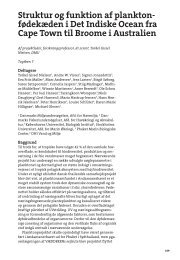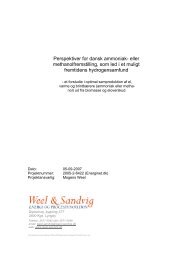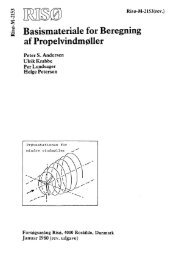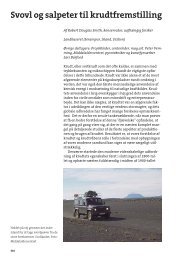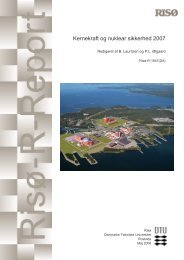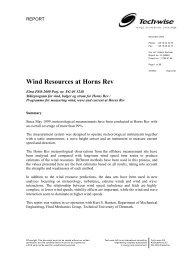Properties of hemp fibre polymer composites -An optimisation of ...
Properties of hemp fibre polymer composites -An optimisation of ...
Properties of hemp fibre polymer composites -An optimisation of ...
You also want an ePaper? Increase the reach of your titles
YUMPU automatically turns print PDFs into web optimized ePapers that Google loves.
The only fertilizer used was 360/480 kg NH4NO3-fertilizer/ha equivalent to 90/120 kg<br />
N/ha. The plants were grown without addition <strong>of</strong> pesticides (Robinson, 1996) and with a<br />
seed dosage <strong>of</strong> 16-32 kg seed/ha.<br />
It has been reported that the maximum stem yield is obtained by sowing 90 plants/m 2<br />
(seed dosage = 15-17 kg seed/ha; Cromack, 1998). If the sowing density is too low<br />
branches will be formed at high extend (van der Werf et al., 1996) and make the <strong>fibre</strong><br />
production difficult. If the plant density is too high, natural thinning will occur and<br />
intermediate plants will die resulting in <strong>fibre</strong> decay (van der Werf et al., 1995).<br />
Flowering should be as late as possible since the <strong>fibre</strong> production rate is lower when seed<br />
formation takes place (van der Werf et al., 1996).<br />
5.1.2 Fibre and seed yield<br />
The cultivation experiments at Danish Institute <strong>of</strong> Agricultural Sciences in 2001, showed<br />
that the <strong>hemp</strong> cultivars Futura and Felina produced few seeds (200-220 kg/ha) and high<br />
<strong>fibre</strong> yields <strong>of</strong> 2.6 and 2.9 ton/ha, respectively (Table 1). The yield was highest with high<br />
dosage <strong>of</strong> fertilizer and low dosage <strong>of</strong> seed (120 kg N/ha, 16 kg seed/ha, Table 1, Figure<br />
3).<br />
Since the <strong>fibre</strong> yield with Felina was 39 kg/100 kg stem without retting (Paper II; van der<br />
Werf et al., 1996) and 27 kg/100 kg stem with retting there was a loss <strong>of</strong> 25% <strong>fibre</strong>s in<br />
the retting procedure. Finola produced less <strong>fibre</strong> mass (0.4 ton/ha) but much seed (2.1<br />
ton/ha), while Fedora produced much stem material (9.8 ton/ha) and a low <strong>fibre</strong> yield (14<br />
g/100 g stem; Table 1).<br />
Table 1. Harvested <strong>hemp</strong> shown as stem size (m), produced seed, leaves, stems and<br />
<strong>fibre</strong>s (kg/ha) by growth <strong>of</strong> four cultivars (Data from HeFiNaC meeting nr. 14).<br />
Hemp Seed Leaves Stems Fibres<br />
cultivar kg/ha kg/ha kg/ha<br />
1<br />
Fibres<br />
kg/ha<br />
1<br />
Stem dia-<br />
g/100 g stem meter 2 Stem length<br />
(mm)<br />
3<br />
(m)<br />
Finola 2100 1300 2600 400 17 7<br />
Fedora 19 600 2300 9800 1400 14 7 2.2<br />
Felina 34 200 1800 9600 2600 27 12 2.2<br />
Futura 77 200 1600 10800 2900 27 11 2.2<br />
1: The <strong>fibre</strong> yield is amount <strong>of</strong> <strong>fibre</strong>s after water retting either pr. ha or pr. 100 g raw stem.<br />
2: The stem diameter is measured in the lower part <strong>of</strong> the stem.<br />
3: The stem length after growth in Southern England with 34-37 kg seed/ ha (Cromack, 1998).<br />
Risø-PhD-11 15



